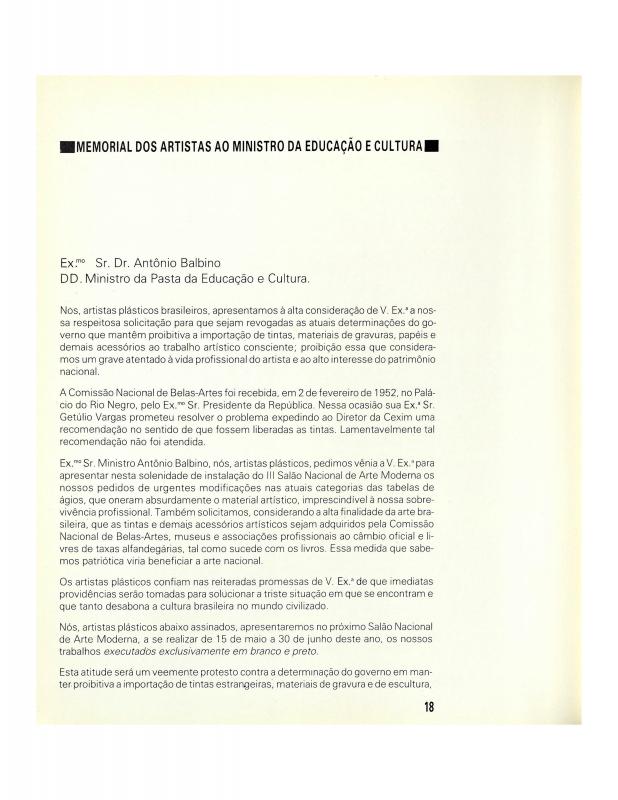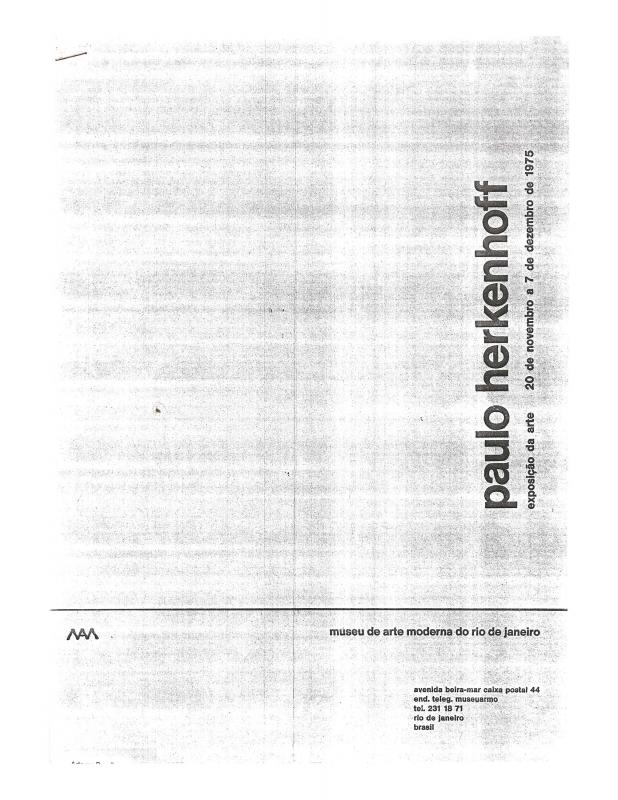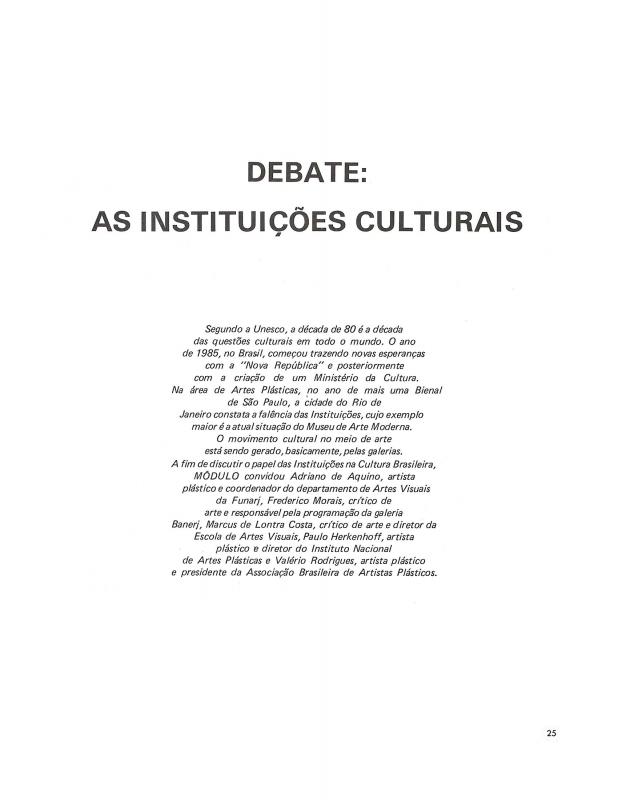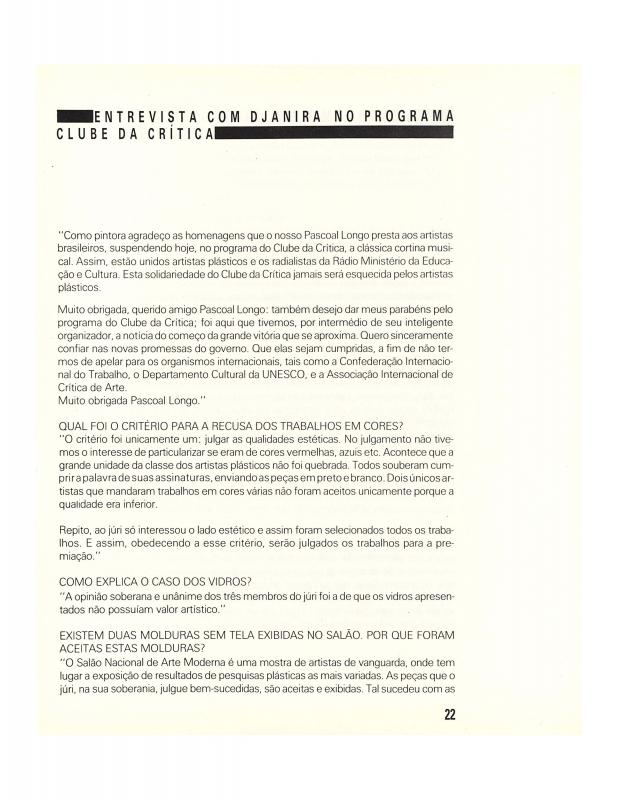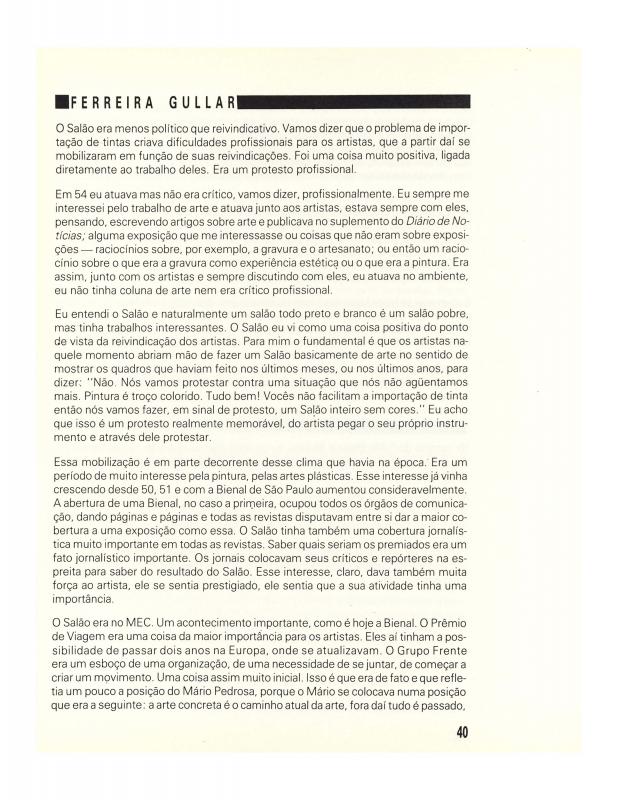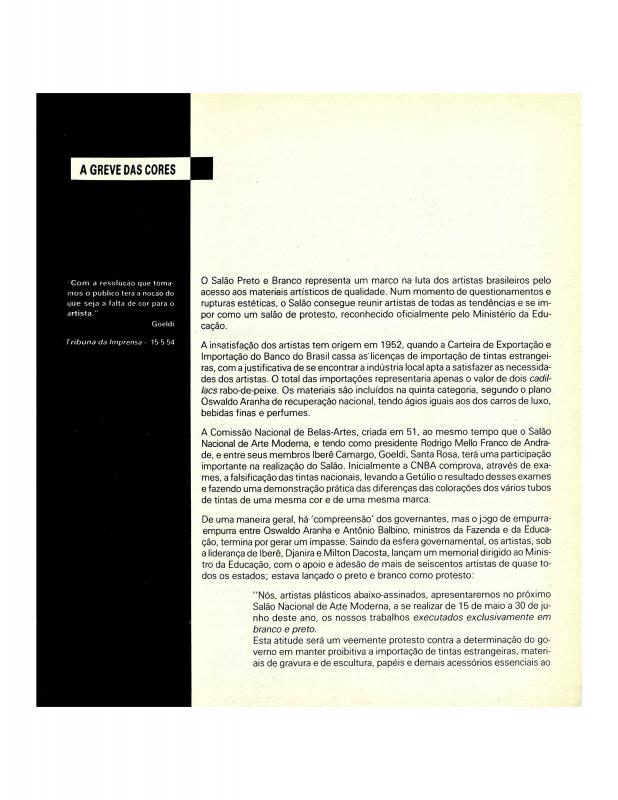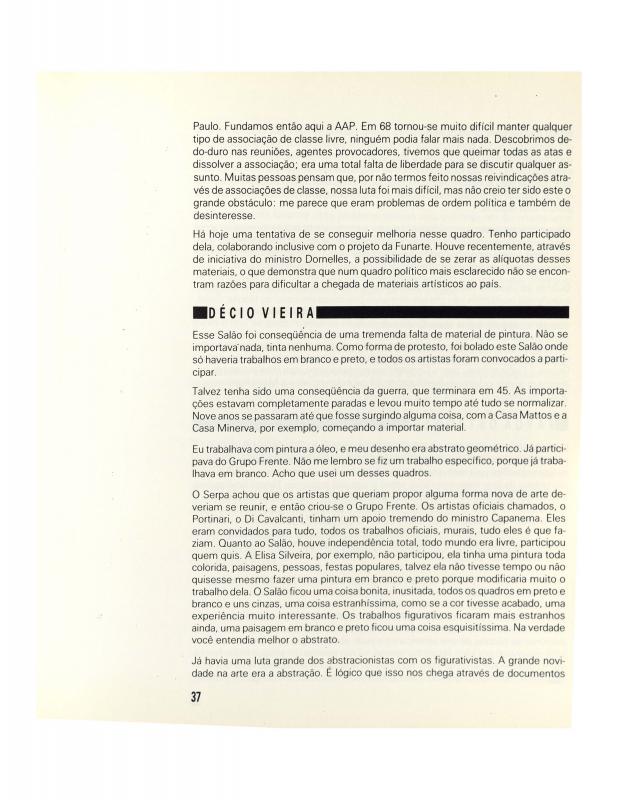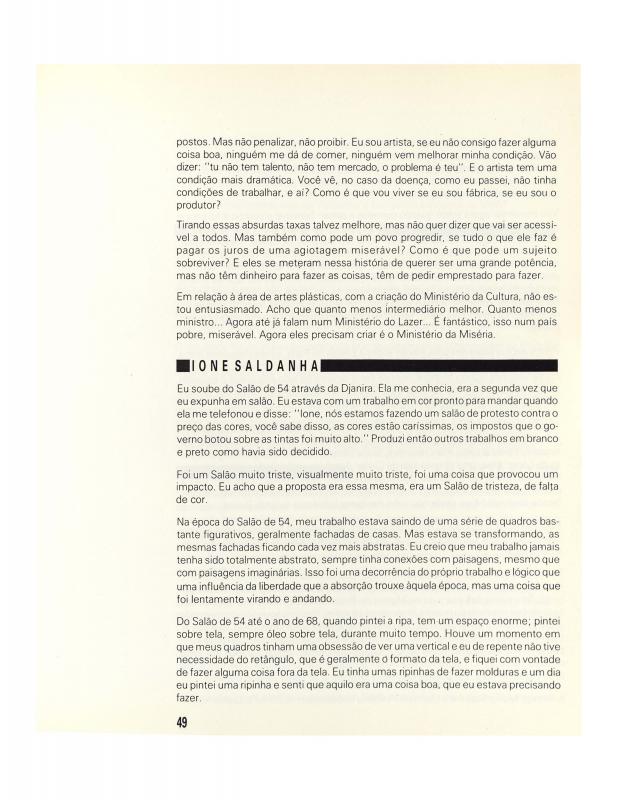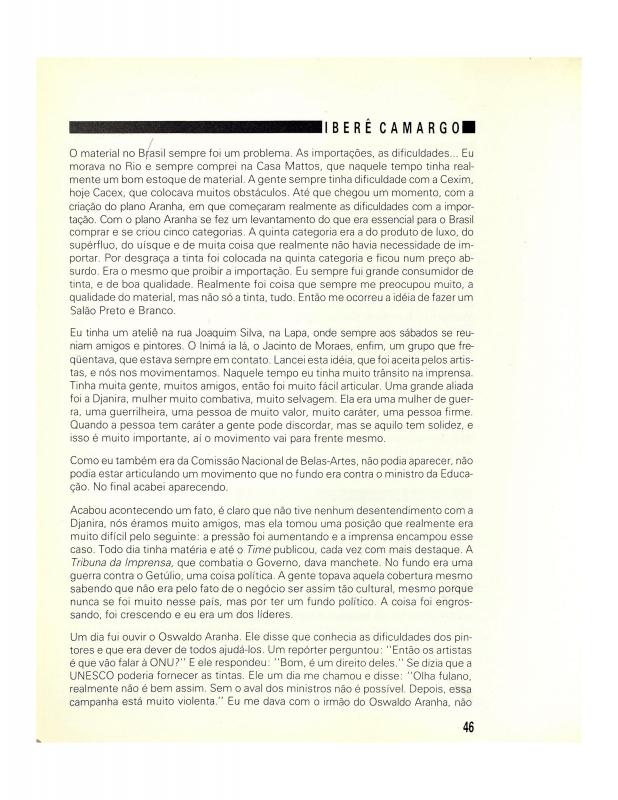The Salão Nacional de Arte Moderna was presented for the first time in 1952 in the wake of the División Moderna (Modern Division) at the Salão Nacional de Belas Artes. The third edition, which came to be known as the Salão Preto e Branco (Black-and-White Salon), opened on May 15, 1954. Participating artists protested against the poor quality of available art materials (mainly substitutes for imported products) due to import restrictions imposed by the Brazilian government. Led by Iberê Camargo, Milton Dacosta, and Djanira, six hundred artists from all over the country signed a manifesto addressed to the Ministério da Educação e Saúde (MES), the Ministry of Education and Health in the Getúlio Vargas administration, objecting to any restrictions on the import of paint, items used for printmaking and sculpture, paper, and other basic materials [see, in the ICAA digital archive (doc. no. 1307648">1307648)]. As stated by Herkenhoff in his essay, the artists described the government’s policy as a threat to their way of life and to the role of art in Brazil’s national legacy.
The essay introduces the book A Arte e seus materiais: Salão Preto e Branco, 3º Salão Nacional de Arte Moderna, 1954 (Art and its Materials: Black-and-White Salon, Third National Modern Art Salon, 1954), published on the occasion of the 1985 exhibition at the Galería Especial del Salão Nacional de Artes Plásticas. According to the book, the situation recalled the famous Black-and-White Salon of 1954 in which works by Camargo, Aluísio Carvão, Anna Letycia, Aldo Bonadei, Ivan Serpa, Lygia Clark, Maria Helena Andrés, Maria Leontina, Tarsila do Amaral, Ubi Bava, and many others were shown. The publication includes primary and secondary sources that refer to the 1954 exhibition, as well as interviews with contemporary artists and critics.
At the time this essay was written, the art critic and curator Paulo Herkenhoff (born 1949) was the director of the Instituto Nacional de Artes Plásticas/FUNARTE. He later held many positions, including curator-in-chief at the Museu de Arte Moderna do Rio de Janeiro (MAM-RJ), general curator of the Bienal de São Paulo (1997 and 1999 editions), assistant curator at the Museum of Modern Art, New York (MoMA), and director of the Museu de Belas Artes do Rio de Janeiro. His exhibition Exposição de Arte was held at Museu de Belas Artes do Rio de Janeiro in 1975, where he presented some innovations in the field of performance art (see, in the ICAA digital archive: (doc. no. 1110618).
For other texts by Herkenhoff regarding institutional matters, see: “Debate: as instituições culturais” (doc. no. 1110949); and “The theme of crisis in contemporary Latin American art” (doc. no. 808425).]
For complementary reading on the subject of the Salão Preto e Branco (Black-and-White Salon), see: “Memorial dos artistas ao Ministro da Educação e Cultura” (doc. no 1307648">1307648); “Mensagem do Ministro da Educação e Cultura ao artistas” (doc. no. 1307663); “Entrevista com Djanira no programa clube da crítica” (doc. no. 1307678) by Pascoal Longo; “Depoimentos: Aluisio Carvão” (doc. no. 1307694) and “Depoimentos: Ferreira Gullar” (doc. no. 1307732) by Glória Ferreira and Luiza Interlenghi; “A greve das cores” (doc. no. 1307631) by Glória Ferreira; the five following testimonials conducted by Luiza Interlenghi: “Depoimentos: Décio Vieira” (doc. no. 1307712); “Depoimentos: Ione Saldanha” (doc. no. 1307774); “Depoimentos: José Silveira D'Ávila” (doc. no. 1307791); “Depoimentos: Sérgio Camargo” (doc. no. 1307831); “Depoimentos: Ubi Bava” (doc. no. 1307851); and “Depoimentos: Iberê Camargo” (doc. no. 1307754) by Evelyn Yoschpe.]

